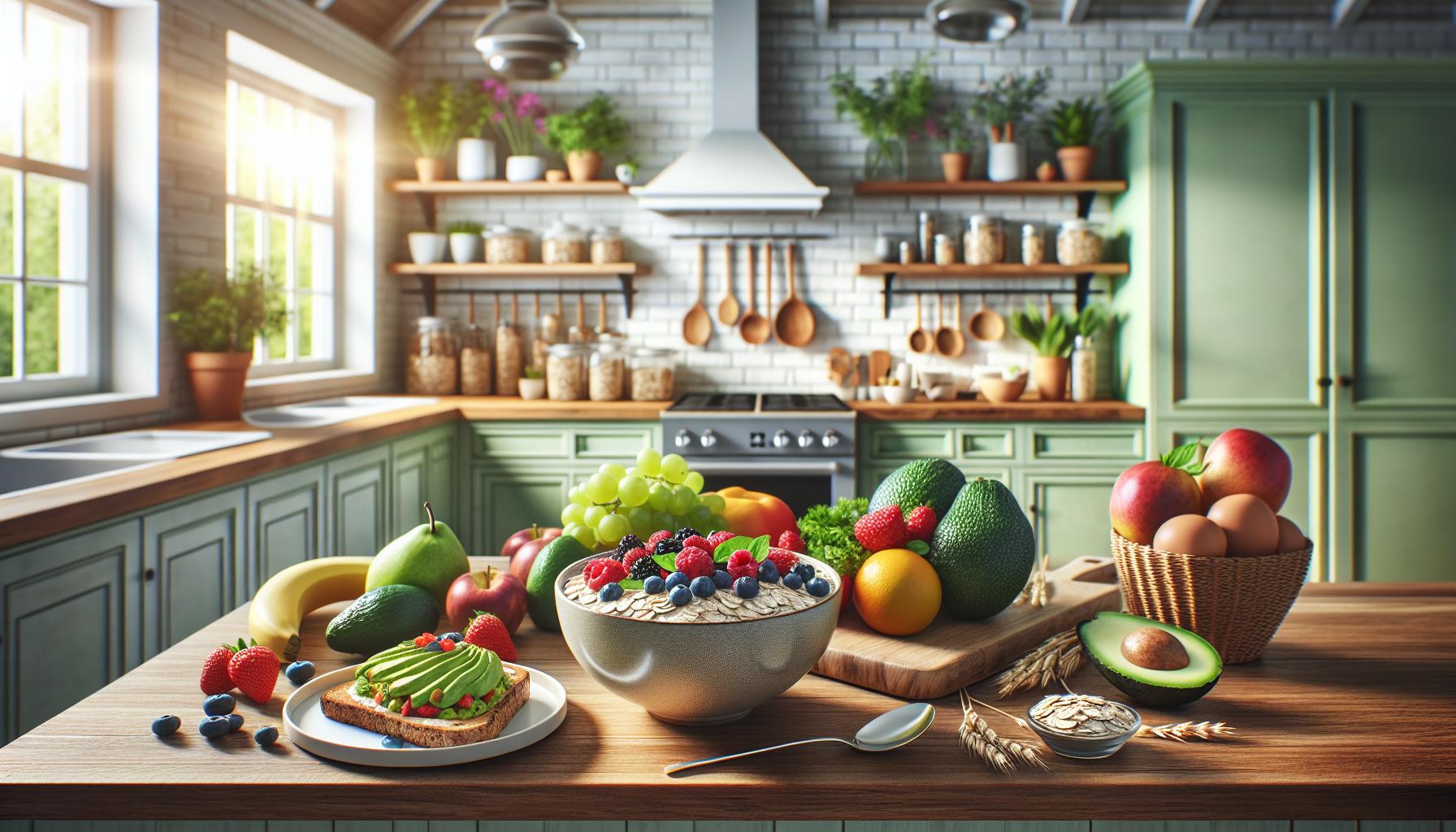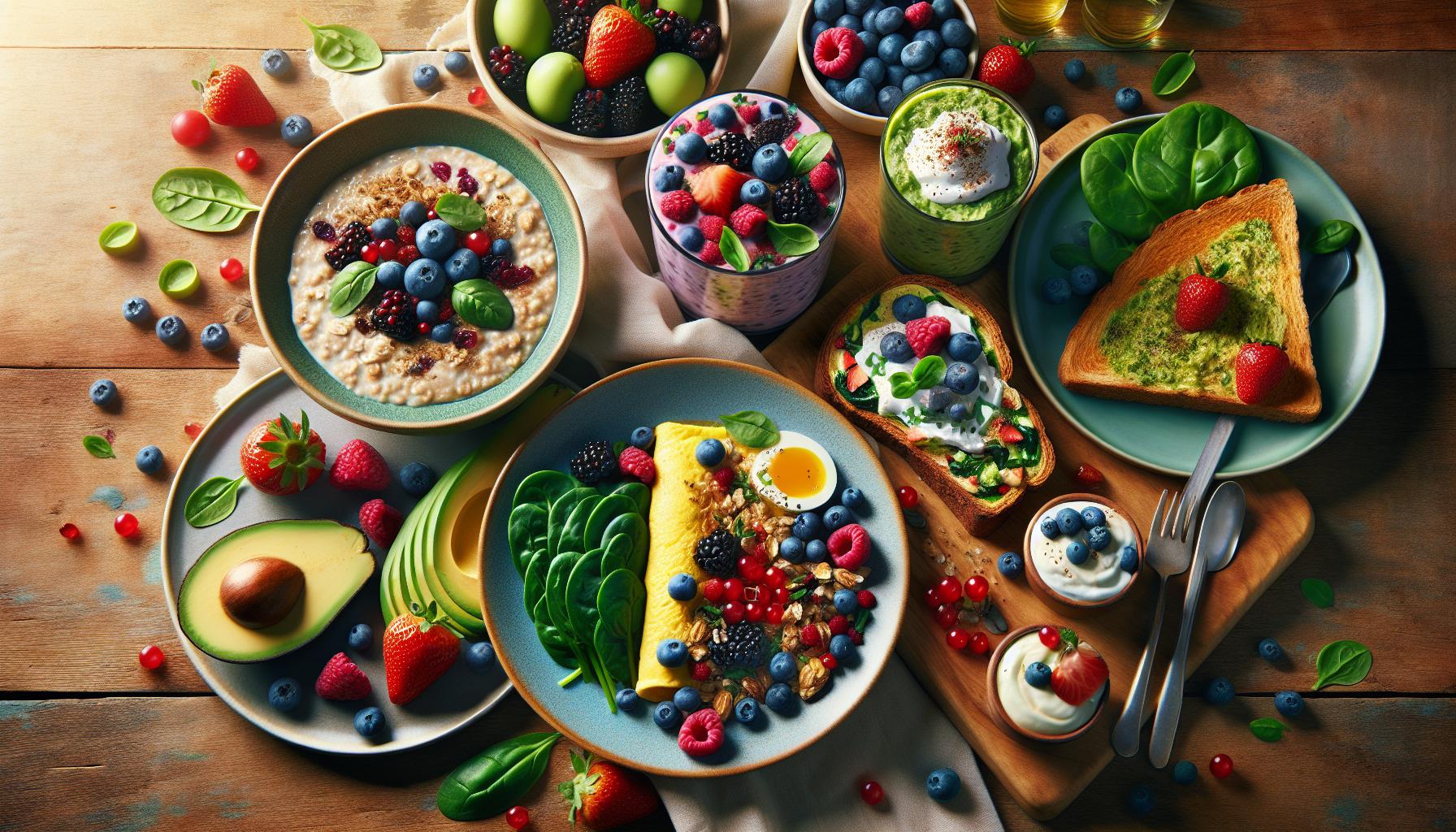Managing high blood pressure can feel overwhelming, but it doesn’t have to be boring or bland. I’ve discovered that incorporating a variety of delicious and nutritious 30 days of healthy recipes for high blood pressure into my daily meals not only helps lower blood pressure but also makes eating healthy enjoyable. With the right ingredients and a little creativity, I can whip up dishes that are both heart-healthy and satisfying.
Key Takeaways
- Understanding Hypertension: High blood pressure affects millions and is influenced by diet, lifestyle, and genetics; managing it is crucial for heart health.
- Diet’s Role: A heart-healthy diet rich in fruits, vegetables, whole grains, and lean proteins is essential for effectively managing blood pressure.
- Key Nutrients: Focus on potassium, magnesium, fiber, omega-3 fatty acids, and antioxidants to support heart health and lower hypertension risks.
- Foods to Avoid: Limit high-sodium foods, sugary beverages, red and processed meats, refined carbohydrates, and excessive alcohol to help maintain healthy blood pressure.
- Recipe Variety: A 30-day meal plan offers diverse, nutritious recipes that make healthy eating enjoyable while effectively managing blood pressure.
- Meal Preparation: Batch cooking and thoughtful grocery shopping simplify healthy eating, ensuring consistency in dietary goals for hypertension management.
30 Days of Healthy Recipes for High Blood Pressure
High blood pressure, or hypertension, affects over 100 million adults in the U.S. It often develops silently, without noticeable symptoms. Blood pressure measures the force of blood against artery walls; consistent high pressure can lead to serious health issues like heart disease and stroke.
Essential hypertension has no identifiable cause but is influenced by genetics, diet, and lifestyle. Secondary hypertension results from underlying health conditions, such as kidney disease or hormonal disorders. Common risk factors include excess weight, lack of physical activity, and high sodium intake.
Managing blood pressure involves lifestyle changes. A heart-healthy diet, rich in fruits, vegetables, whole grains, and lean proteins, helps lower blood pressure. Reducing sodium and alcohol consumption, along with quitting smoking, can significantly improve overall heart health. Regular exercise for at least 150 minutes a week promotes cardiovascular fitness. Monitoring blood pressure regularly can help in tracking progress.
Understanding these elements aids in recognizing the importance of healthy eating habits to combat hypertension. Incorporating a variety of nourishing recipes not only enhances meal enjoyment but also supports healthier blood pressure levels.
Importance of Diet in Managing Blood Pressure


Diet plays a crucial role in managing blood pressure levels effectively. Incorporating the right foods can enhance heart health and lower hypertension risks.
Key Nutrients to Focus On
- Potassium: Potassium helps balance sodium levels, reducing tension in the blood vessel walls. Foods rich in potassium include bananas, spinach, and sweet potatoes.
- Magnesium: Magnesium aids in muscle function and helps regulate blood pressure. Include nuts, seeds, and whole grains for optimal magnesium intake.
- Fiber: A high-fiber diet promotes heart health by lowering cholesterol and improving overall cardiovascular function. Oats, legumes, and fruits provide essential fiber.
- Omega-3 Fatty Acids: Omega-3s support heart health by reducing inflammation and lowering blood pressure. Sources include fatty fish like salmon, flaxseeds, and walnuts.
- Antioxidants: Antioxidants protect blood vessels from damage caused by free radicals. Foods like berries, dark chocolate, and green tea are rich in antioxidants.
- High-Sodium Foods: Excess sodium contributes to hypertension. Avoid processed foods, canned soups, and salty snacks.
- Sugary Beverages: Added sugars can lead to weight gain and increased blood pressure. Limit consumption of soda and sweetened drinks.
- Red and Processed Meats: These foods often contain high levels of saturated fats and sodium, raising blood pressure. Choose lean proteins, such as chicken or fish.
- Refined Carbohydrates: Refined grains contribute to blood sugar spikes, which can impact overall health. Opt for whole grain alternatives.
- Alcohol: Excessive alcohol consumption can raise blood pressure. Limit intake to moderate levels, defined as one drink per day for women and two for men.
30 Days of Healthy Recipes


Here’s a collection of 30 days of healthy recipes for high blood pressure that can help lower blood pressure while providing satisfying meals throughout the month.
Week 1: Heart-Healthy Breakfasts
- Oatmeal with Berries: Cook 1 cup of rolled oats with 2 cups of water. Top with a handful of mixed berries and a sprinkle of cinnamon.
- Spinach Omelette: Whisk 3 eggs, add 1 cup of spinach, and cook in a non-stick pan without oil. Serve with sliced tomatoes.
- Greek Yogurt Parfait: Layer 1 cup of low-fat Greek yogurt with 1/2 cup of sliced fresh fruit and 1/4 cup of granola.
- Avocado Toast: Mash 1/2 ripe avocado on whole-grain toast, topped with sliced radishes and a pinch of salt.
- Smoothie Bowl: Blend 1 banana, 1/2 cup of spinach, and 1 cup of unsweetened almond milk. Pour into a bowl and top with sliced almonds and chia seeds.
Week 2: Nutritious Lunches
- Quinoa Salad: Mix 1 cup of cooked quinoa with 1 cup of diced vegetables (like cucumber, bell pepper, and cherry tomatoes) and a squeeze of lemon juice.
- Lentil Soup: Simmer 1 cup of lentils with chopped carrots, celery, and onions in low-sodium vegetable broth. Season with herbs.
- Turkey Wrap: Use a whole grain tortilla filled with 4 ounces of sliced turkey, mixed greens, and avocado. Roll tightly and slice.
- Chickpea Salad: Combine 1 can of rinsed chickpeas, diced peppers, onion, and a dressing of olive oil and vinegar.
- Vegetable Stir-Fry: Sauté 2 cups of mixed vegetables (like broccoli, carrots, and snap peas) in a non-stick pan with low-sodium soy sauce.
Week 3: Wholesome Dinners
- Baked Salmon: Season a 4-ounce salmon fillet with herbs and lemon juice, bake at 375°F for 15-20 minutes. Serve with steamed asparagus.
- Stuffed Bell Peppers: Fill halved bell peppers with a mixture of 1 cup cooked brown rice, black beans, and spices. Bake at 350°F for 30 minutes.
- Zucchini Noodles: Spiralize 2 zucchinis and sauté with garlic and cherry tomatoes. Add shrimp or grilled chicken for protein.
- Chicken Stir-Fry: Cook 4 ounces of sliced chicken breast with a variety of vegetables in a low-sodium teriyaki sauce for flavor.
- Vegetable Curry: Simmer cauliflower, peas, and carrots in coconut milk and curry powder, serve over brown rice.
- Hummus and Veggies: Dip sliced cucumbers and carrots into 1/2 cup of homemade or store-bought hummus.
- Apple Slices with Nut Butter: Spread 2 tablespoons of almond or peanut butter on apple slices for a filling snack.
- Greek Yogurt with Honey: Drizzle 1 cup of low-fat Greek yogurt with a tablespoon of honey and sprinkle with nuts.
- Frozen Banana Bites: Slice bananas, spread a thin layer of nut butter between slices, and freeze for a tasty treat.
- Chia Pudding: Mix 1/4 cup of chia seeds with 1 cup of almond milk and let it sit overnight. Add fruits for flavor.
Tips for Meal Preparation and Planning


Meal preparation plays a crucial role in managing high blood pressure effectively. Thoughtful planning not only simplifies healthy eating but also ensures consistency in maintaining dietary goals.
Batch Cooking Strategies
Batch cooking saves time and reduces stress during the week. Choose a day to prepare multiple meals at once. For example, cooking large portions of grains like quinoa or brown rice, roasted vegetables, and lean proteins such as chicken or fish can create a base for several dishes. Store meals in individual containers for quick access to nutritious options. Incorporating heart-healthy spices and herbs during cooking enhances the flavor without adding excess sodium. Always label and date containers to keep track of freshness.
Grocery Shopping List
A well-structured grocery list streamlines the shopping process and minimizes impulse buys. Focus on whole foods that support heart health. Include items such as:
- Fresh fruits: apples, berries, bananas, oranges
- Fresh vegetables: spinach, broccoli, carrots, bell peppers
- Whole grains: quinoa, brown rice, oatmeal
- Lean proteins: chicken breast, fish, legumes, tofu
- Healthy fats: avocados, nuts, seeds, olive oil
- Low-sodium seasonings: herbs, spices, vinegar, lemon juice
Organize the list by sections (produce, grains, proteins, and pantry items) to save time in the store. This approach ensures a rich variety of ingredients for preparing heart-healthy meals throughout the week.
Keeping Blood Pressure in Check
Embracing a heart-healthy lifestyle doesn’t have to feel like a chore. I’ve discovered that with a little creativity and the right ingredients, managing high blood pressure can be both enjoyable and delicious. The 30 days of healthy recipes for high blood pressure I’ve shared are just the beginning of a journey toward better health.
By incorporating a variety of meals that focus on essential nutrients, I’ve found it’s possible to make significant changes without sacrificing flavor. With meal prep and planning, I can effortlessly create satisfying dishes that support my heart health. Remember that every small step counts in this journey. Let’s savor the process of nourishing our bodies while keeping our blood pressure in check.



